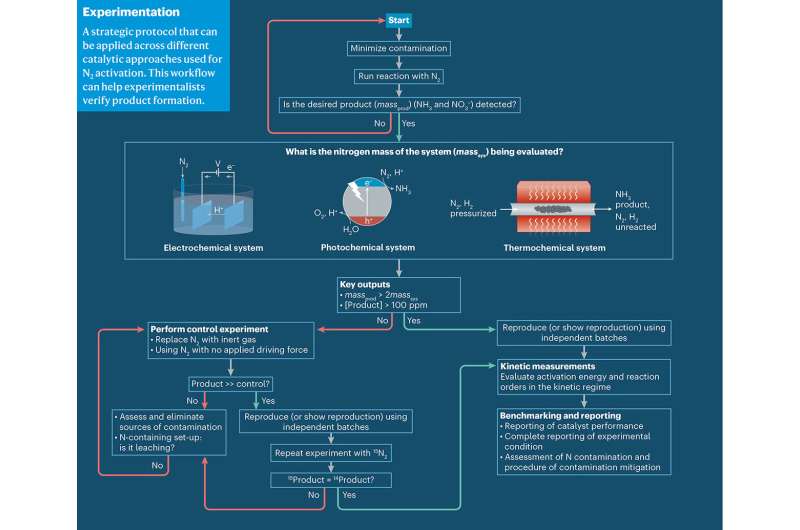Researchers provide guidance on nitrogen activation by reduction and oxidation

Nitrogen is essential to all forms of life. The formidable strength of the N≡N triple bond makes N2 fixation into biologically available forms extremely difficult.
At present, the activation and conversion of nitrogen mainly rely on Haber-Bosch process. However, the process has significant drawbacks such as requirement of harsh reaction conditions, high energy consumption, and large CO2 emissions.
Recently, Prof. Chen Ping's group from the Dalian Institute of Chemical Physics (DICP) of the Chinese Academy of Sciences and their collaborators published a primer in Nature Reviews Methods Primers to discuss research techniques and methods in the field of nitrogen reduction and oxidation.
New methods of sustainable N2 activation and conversion, such as low-temperature and low-pressure thermal catalysis and (photo)electrocatalysis, have been pursued, but progress has been hindered by the lack of rigor and reproducibility in the collection and analysis of results.
"We want to give a guidance on techniques and methods in the field of nitrogen reduction and oxidation," said Prof. Chen.
The researchers reviewed the historic development of N2 activation, and analyzed its importance and challenges combined with theoretical calculations.
Then, they provided a holistic step by step protocol applicable to all nitrogen-transformation reactions, including the introduction of experimental set-up, detection methods of the products, possible sources of the contaminants, catalytic performance evaluation, analysis of the experimental results, and theoretical calculations. They compared and analyzed the state-of-the-art results from different catalytic reactions following the protocol's framework.
This primer covers various common pitfalls in the field, best practices to improve reproducibility and cost-efficient methods to carry out rigorous experimentation.
"The future research of nitrogen activation and conversion requires rigorous experimentation and standardization to prevent false positives from appearing in the literature, which would enable advancing towards practical technologies for the activation of N2," said Prof. Chen.
More information: Haldrian Iriawan et al, Methods for nitrogen activation by reduction and oxidation, Nature Reviews Methods Primers (2021). DOI: 10.1038/s43586-021-00053-y
Provided by Chinese Academy of Sciences




















